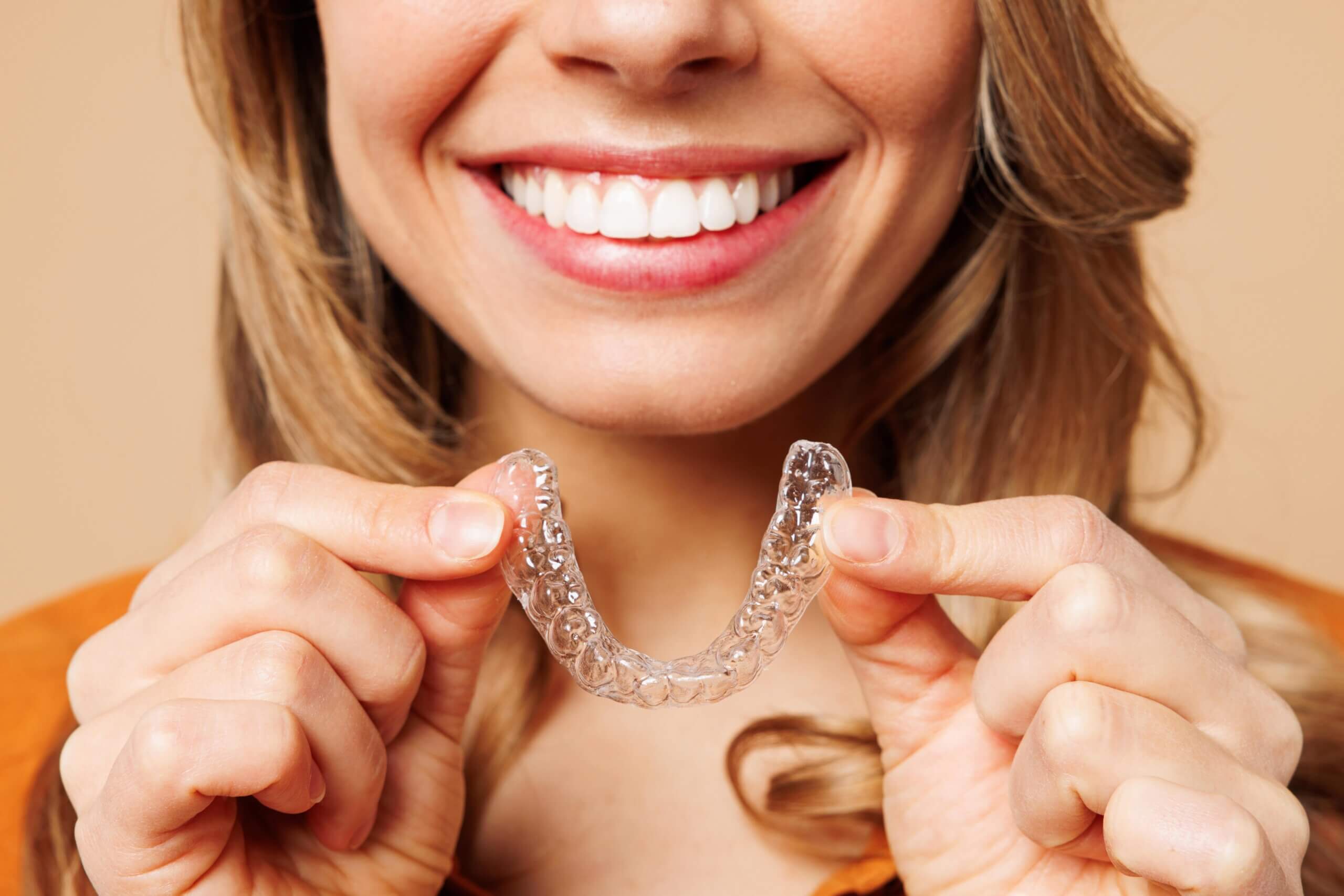
Clear Choices: Why Invisalign Might Be Right for You
If you want a straighter smile without the visible metal brackets of traditional braces, you’ve probably considered Invisalign. Since 1997, the virtually invisible, computer-generated orthodontic aligners have been used to correct minor malocclusions, such as overbites, underbites, and spacing issues. While Invisalign remains one of the most popular ways to straighten crooked teeth, this treatment approach is not right for all patients. Find out exactly how Invisalign works, how it compares to traditional braces, and why it may be right for you.
Invisalign vs. Traditional Braces
While Invisalign and traditional metal braces are designed to have the same outcome, straighter teeth, the process of realigning the teeth is quite different.
Traditional braces are metal brackets bonded to the teeth and attached by wires. As the brackets are affixed to the teeth, they apply controlled, continuous pressure that gradually shifts teeth into their proper places over time. Traditional braces are the ideal treatment option for patients with complex alignment problems, such as major bite issues, severe crowding, and significant tooth rotation.
Conversely, Invisalign is a more modern orthodontic solution, allowing patients to straighten their teeth discreetly. The treatment involves a series of custom-made, clear aligners the patient inserts over their natural teeth. Over time, the aligners move their teeth. New aligners are inserted every one to two weeks to account for changes in bite. Invisalign is best suited for patients with mild to moderate alignment problems, such as minor gaps and crowding.
Are You a Candidate for Invisalign?
While only your Melbourne, FL dentist can determine if you’re a good candidate for Invisalign, there are several things to consider.
First, Invisalign may be right if your orthodontic case is straightforward. Many cases of crooked teeth can be resolved using clear aligners, and patients with gaps, underbites, overbites, open bites, and crossbites can also be treated with Invisalign. However, more complex cases, especially those that require dental surgery, may not be well-treated with Invisalign.
Next, consider the commitment involved in wearing Invisalign. While proper hygiene is essential with any braces, clear aligners are necessary. They must be removed when you eat to prevent damage to the plastic. They must also be cleaned regularly to avoid a buildup of harmful bacteria. When you’re not eating, you must remember to wear them. If you’re not committed to cleaning, wearing, and handling your aligners as your Melbourne, FL dentist instructed, Invisalign may not be right for you.
You’ll also want to consider your age. Many orthodontists will not offer Invisalign as a treatment method to patients who do not yet have all their adult teeth. While many children will have lost all their baby teeth by 12 or 13, some may maintain them until their late teens or early 20s. If you only have one or two adult teeth lingering, your provider may recommend waiting until they fall out or having them extracted.
Finally, consider your lifestyle habits. As Invisalign aligners must be worn the majority of the day, habits like smoking or tobacco use can be a significant problem. Not only can these substances stain the aligners and leave behind sticky residue, but they could also potentially damage the costly aligners. If you plan to get Invisalign, consider quitting first, or your provider may recommend traditional braces.
Schedule a Consultation Today
There are many reasons why patients favor Invisalign over traditional braces. They are nearly invisible, allowing you to straighten your teeth without noticeable wires and brackets. They are also removable, making it easy to drink, eat, and maintain your oral hygiene without obstructions. Invisalign may also mean fewer office visits and faster results for many patients. However, you’ll want to consult your orthodontist to see if Invisalign is right for your unique case.
For a straighter smile without the look or restrictions of traditional metal braces, contact the orthodontic team at Artistic Touch Dentistry today to schedule an appointment.

